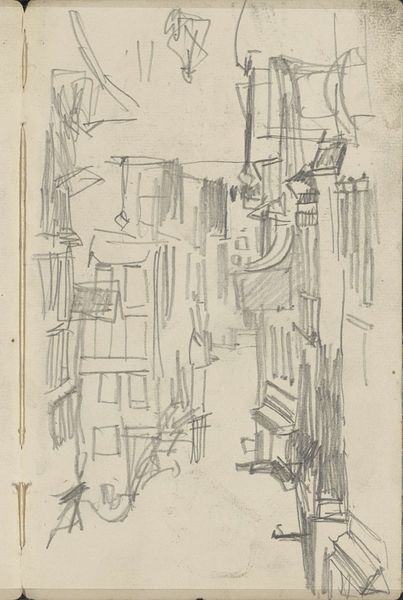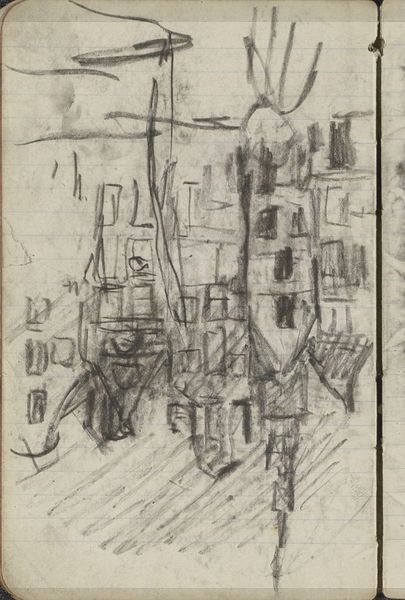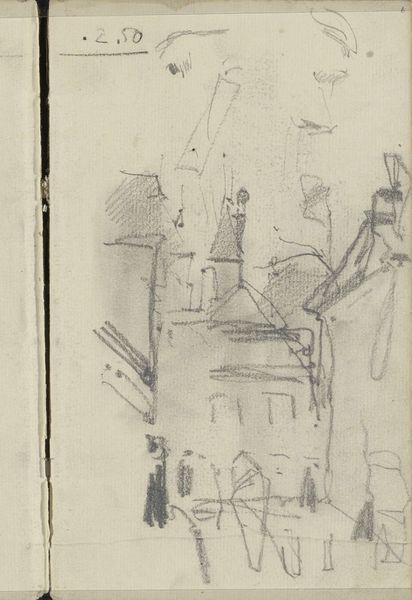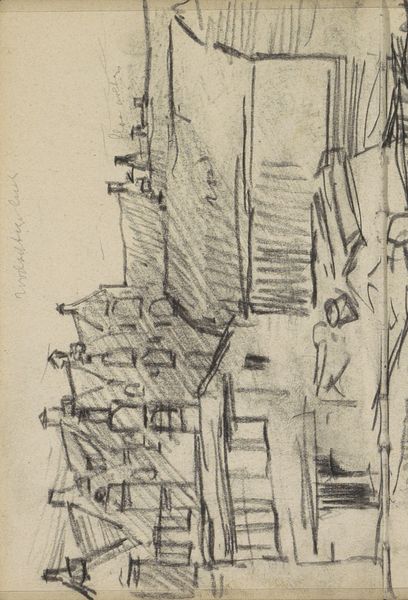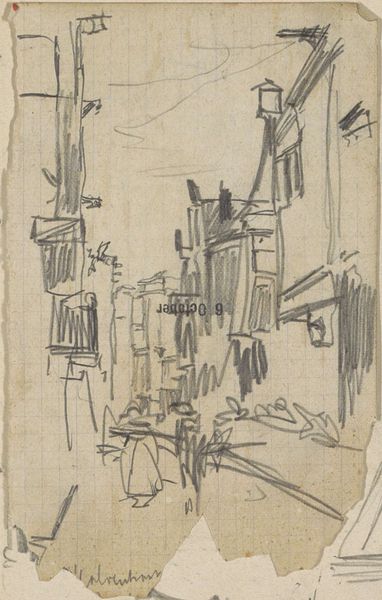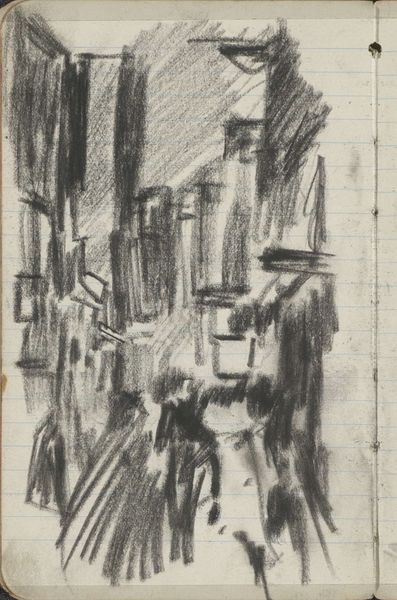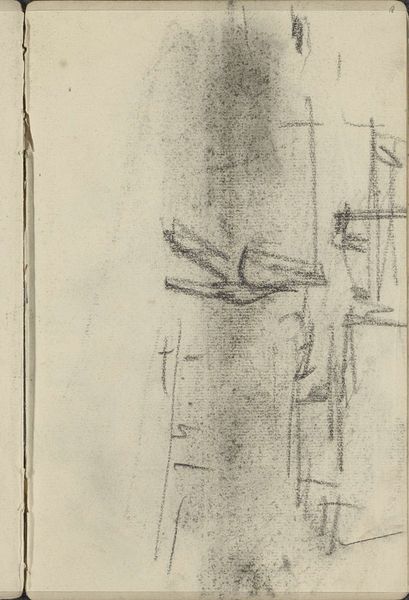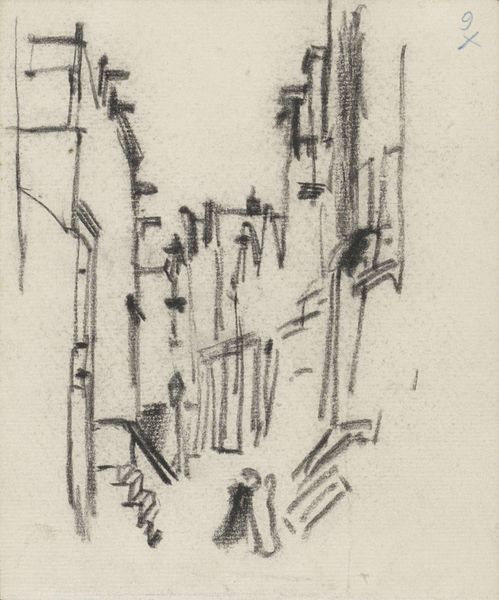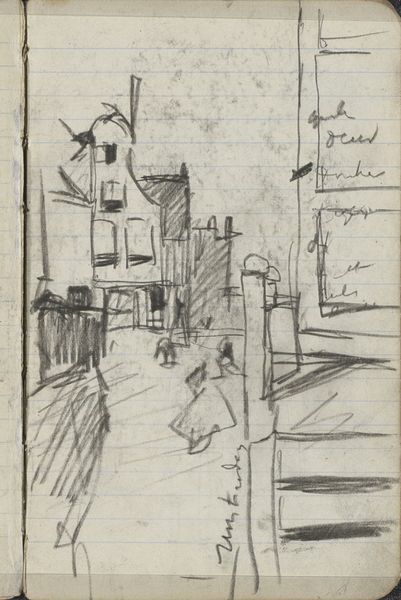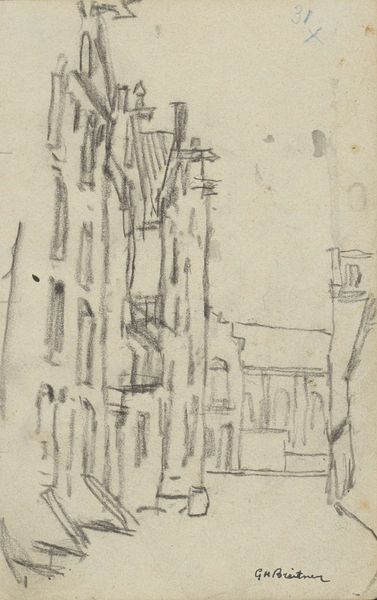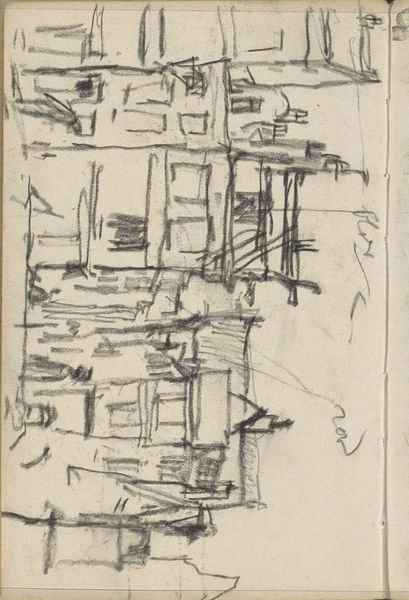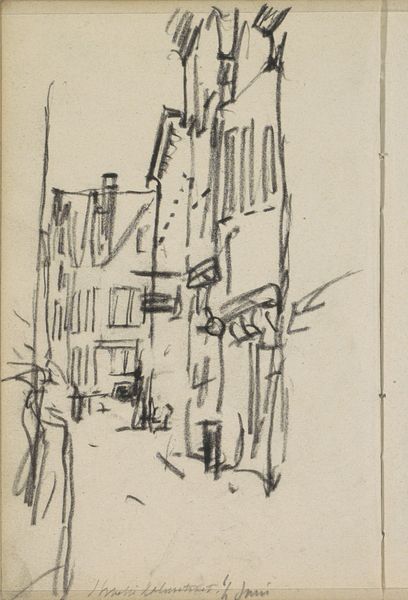
Brug over het Singel te Amsterdam, gezien naar het Koninklijk Paleis c. 1886s
0:00
0:00
#
aged paper
#
toned paper
#
quirky sketch
#
sketch book
#
personal sketchbook
#
ink drawing experimentation
#
sketchbook drawing
#
watercolour illustration
#
storyboard and sketchbook work
#
sketchbook art
Copyright: Rijks Museum: Open Domain
Curator: What strikes me immediately is the sense of quiet observation—there's almost a diary-like quality to it. Editor: You've touched on something interesting. This ink drawing, titled "Brug over het Singel te Amsterdam, gezien naar het Koninklijk Paleis," by George Hendrik Breitner, circa 1886, is found within a sketchbook. Curator: Right, so that informs the reading of it as something of an exercise, or perhaps even a mnemonic device? Look how casually the artist captures the light glinting off what appears to be the Royal Palace in the distance. What do you make of the architectural motifs? Editor: I see the composition itself as deeply symbolic. The bridge acts as a clear metaphor for transition and connection, both physical and perhaps societal. What’s being bridged here is not only a canal, but also, perhaps, the old and the new, the traditional and the modern, the opulent palace with the working-class existence suggested on the other side of the Singel. Curator: The way the aged, toned paper peeks through the sketch adds another layer, a reminder of the past literally informing how we perceive the present. The sketch is raw, immediate—less concerned with pristine realism and more with capturing an essence. Editor: Absolutely. Breitner was keenly aware of the changing face of Amsterdam, the growing class divisions, and he sought to portray the unvarnished reality of city life. This sketchbook offers something so intimate, raw, and fundamentally real about everyday life. Curator: This type of work grants a privilege: viewing art that wouldn't necessarily be presented in the classic Salon exhibition context, providing an opportunity to access what was otherwise deemed minor or informal work. Editor: Viewing art in this way underscores that artistic process—the sketches and preliminary works are often as revealing, if not more so, than finished studio pieces. Breitner’s social commentary lives here, unrefined and vital. Curator: So this aged paper then isn't simply a material reality; it is itself another part of the story. I see now more acutely its emotional effect. Editor: I agree entirely; understanding the historical context helps bring depth and meaning to seemingly simple forms. The dialogue that we establish between his era and our own opens doors to meaningful considerations about society, class, and urban spaces that still reverberate loudly today.
Comments
No comments
Be the first to comment and join the conversation on the ultimate creative platform.
